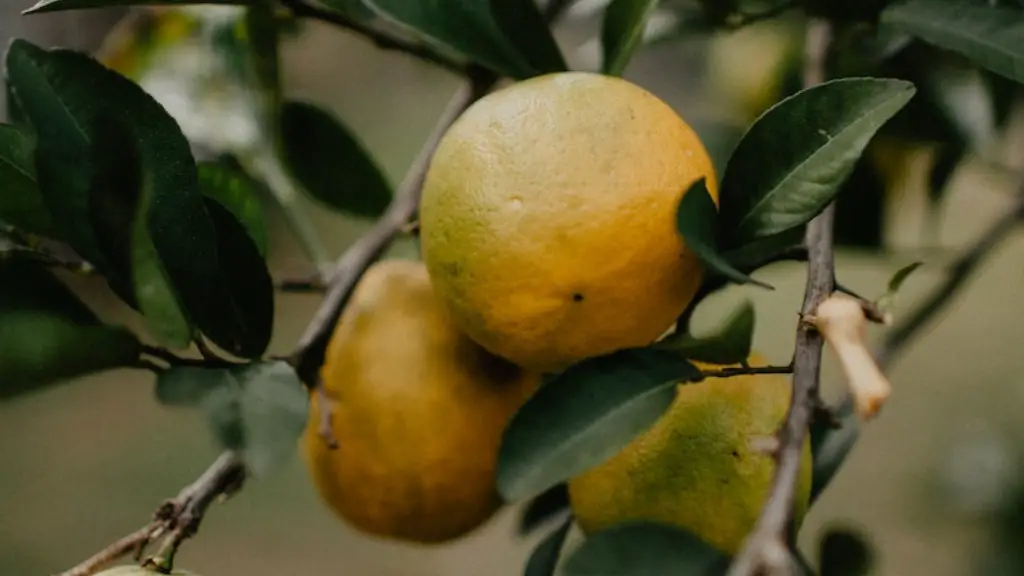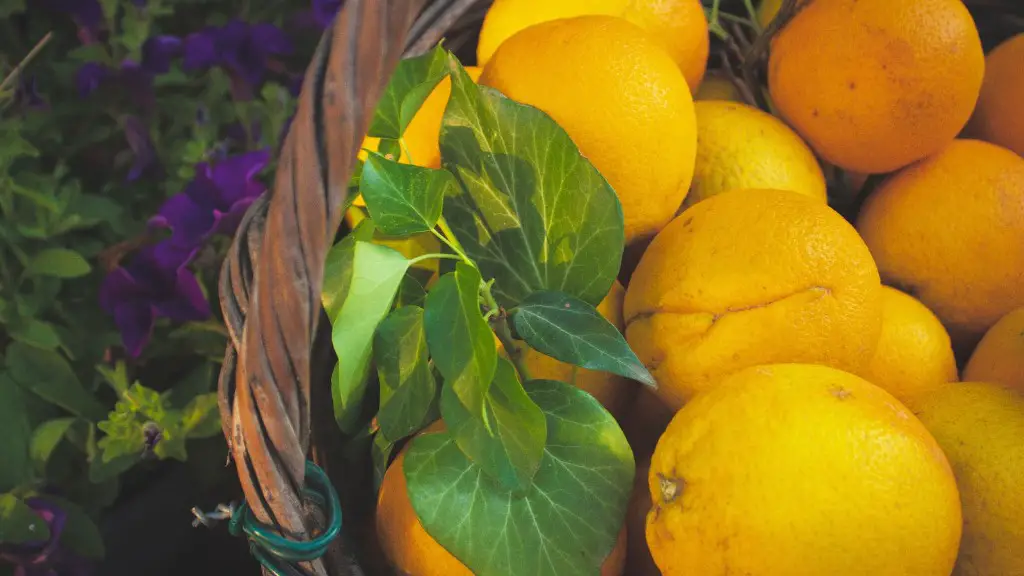Lemon trees are relatively easy to care for, and can often be found in home gardens. Although they may take years to mature enough to produce fruit, they are a great addition to any garden. There is no one-size-fits-all answer to when is the best time to transplant a lemon tree, but there are a few factors to consider when deciding when is the right time.
Temperature
The optimal time to transplant a lemon tree is when temperatures are mild. This means temperatures ideally between 45 and 75 degrees Fahrenheit. Transplanting during a time of cooler temperatures can allow the roots to more easily adjust before colder temperatures set in. It is important to not wait too late in the year, as temperatures can suddenly drop and cause serious damage to a newly-transplanted tree.
Plant Location
What is most important when transplanting a lemon tree is the location in which it is placed. Lemon trees require a lot of sun, so it is important to find a spot that gets at least eight hours of direct sunlight. Placing the tree in a spot where it will get enough sun is especially important during the transplant – it can help prevent the shock of not getting enough sunlight.
Soil Condition
When selecting the right spot for a lemon tree, the soil condition should be taken into account. Lemon trees do best in soil that is well-draining and slightly acidic. If planting in soil that does not meet the ideal for lemon trees, then the soil can be amended at the time of transplant so it is more suitable for the tree.
Watering
Water is essential to a healthy lemon tree. When transplanting, it is important to make sure the tree receives extra water until it become established. It is not recommended to water the tree a few days before the transplant, as this can make it harder to remove the tree from the ground. As always, too much water can be detrimental so the tree should not be left in standing water.
Season
The best season to transplant a lemon tree is during Spring or Fall. The soil is warmer and moister during these times, which can help with the root system adjustment. Additionally, the cooler weather can reduce stress on the tree as it gets re-acclimated to its new environment.
Preparation
When transplanting a lemon tree, it is important to prepare for the task. Pruning can encourage more growth and a larger root system, so it is recommended to trim the roots and the branches of the tree before transplanting. This can help the tree adjust to its new spot and cause less shock when planted. Additionally, the hole in which the tree is placed should be large and deep to give the roots enough space for growth.
Supplies
In order to transplant a lemon tree correctly, it is important to have the right supplies. These include a spade, a bucket or a tarp, and topsoil. The bucket or tarp can help when it comes time to remove the tree from the ground, while the spade and the topsoil are essential for the new planting spot.
Sunny Location
As mentioned before, lemon trees require a lot of sun and a sunny location is essential. When transplanting, it is important to find a sunny location with at least 8 hours of direct sunlight a day and a spot with good drainage. Poor drainage can lead to insufficient water for the tree and more problems such as root rot. The location should also be free from strong winds that can do damage to newly-planted trees.
Soil Testing
Testing the soil where the lemon tree is to be planted is an important step when transplanting. The composition of the soil will determine how much and what type of fertilizer is needed, as well as the ideal watering schedule. Careful soil testing can help avoid over- and under-fertilizing, over- or under-watering, and will ensure the tree gets the exact nutrients it needs for a healthy growth.
Mulching
Mulching is an important step when caring for trees, and this is especially true for a newly-transplanted lemon tree. Mulching helps the soil retain moisture and helps keep the roots from becoming too dry or too wet. It is important to not over-mulch, as too much can compact the soil and lead to drainage issues. Applying a two- to three-inch layer of mulch can give the tree the nutrients it needs while also keeping the soil at an optimum temperature.
Feeding
Feeding a newly-transplanted lemon tree can help it to adjust to its new environment. Certain types of fertilizer, such as organic or synthetic, can help the tree to grow and produce fruit. It is important to understand which type of fertilizer is best for a lemon tree, as well as the right amount to feed the tree. Additionally, it is important to not over-feed the tree, as this can do more harm than good.
Insect Repellent
Insects and pests can easily damage a newly-transplanted lemon tree if effective prevention measures are not taken. It is important to use insect repellents and barriers during the early growth stages of the tree to ensure it is protected from various pests. Additionally, it is also important to keep an eye out for any signs of pests.
Pruning
Pruning a lemon tree can help keep it healthy and ensure its growth. Pruning should be done once a year, and helps keep the tree’s shape and removes any dead or dying branches. Pruning should be done carefully and be sure to not trim too much, as an excessive amount of pruning can do more harm than good.
Grafting
Grafting is a common technique used for citrus trees. It is a process by which a branch from a desired citrus variety is attached to a pre-existing tree. Grafting is a great way to get a desired variety without having to start from seed. Grafting is a relatively simple process and can ensure that a lemon tree is of desired quality and variety.


